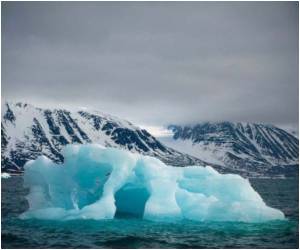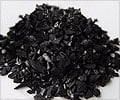Climate change could force out billions of tons of carbon from permafrost in high altitudes. It could be as early as the end of this century.

The research was led by Charles Koven of the U.S. Department of Energy’s Lawrence Berkeley National Laboratory (Berkeley Lab). He conducted the research with a team of scientists from France, Canada, and the United Kingdom while he was a postdoctoral researcher at France’s Laboratoire des Sciences du Climat et de l’Environnement. The modeling was conducted at a supercomputing facility run by France’s Alternative Energies and Atomic Energy Commission.
Their study was published in last week’s online early edition of the Proceedings of the National Academy of Sciences.
Their findings counter results from a comparison of models that was included in the Intergovernmental Panel on Climate Change’s 2007 fourth assessment report. The comparison found that climate change will spark a growth in high-latitude vegetation, which will pull in more carbon from the atmosphere than thawing permafrost will release.
But unlike earlier models, the new model includes detailed processes of how carbon accumulates in high-latitude soil over millennia, and how it’s released as permafrost thaws. Because it includes these processes, the model begins with much more carbon in the soil than previous models. It also better represents the carbon’s vulnerability to decomposition as the soil warms.
As a result, the new model found that the increase in carbon uptake by more vegetation will be overshadowed by a much larger amount of carbon released into the atmosphere.
Advertisement
Koven and colleagues set out to estimate how much carbon dioxide and methane (which contains carbon) could be released by boreal and Arctic land ecosystems as a result of climate change. These regions are crucial to the global carbon cycle because they are rich in soil organic carbon, which has built up in frozen soils and peat layers over thousands of years.
Advertisement
The scientists modified a land surface ecosystem model called ORCHIDEE to account for how carbon behaves at different layers, such as at the surface versus 30 centimeters below ground. They also accounted for the rate of soil carbon decomposition as a function of temperature at the freeze-thaw boundary, which sinks deeper and deeper as soil warms. Other improvements include soil physics that more realistically capture the effects of organic matter on carbon. Most other models do not have all of these phenomena.
To determine how these processes affect the balance of carbon dioxide and methane in high-latitude soils, the scientists ran four simulations from 1860 to 2100, each with a different assortment of processes. They added in a middle-of-the-road climate change scenario that caused high-latitude surface soil to rise 8 degrees Celsius by 2100, which is much greater than the global average.
The simulations revealed a climate-induced loss of between 25 and 85 petagrams of carbon, depending on the processes included. The best estimate is from a simulation that includes all of the permafrost soil processes. It found that 62 petagrams of soil carbon will be released into the atmosphere by 2100, or about 68 billion U.S. tons. This release of carbon is equivalent to an additional 7.5 years of global anthropogenic emissions at today’s rate.
The simulation also found only a slight increase in methane release, which is contrary to previous predictions.
“People have this idea that permafrost thaw will release methane,” says Koven. “But whether carbon comes out as carbon dioxide or methane is dependent on hydrology and other fine-scale processes that models have a poor ability to resolve. It’s possible that warming at high latitudes leads to drying in many regions, and thus less methane emissions, and in fact this is what we found.”
Koven adds that there are large uncertainties in the model that need to be addressed, such as the role of nitrogen feedbacks, which affect plant growth. And he says that more research is needed to better understand the processes that cause carbon to be released in permanently frozen, seasonally frozen, and thawed soil layers.
Source-Medindia







